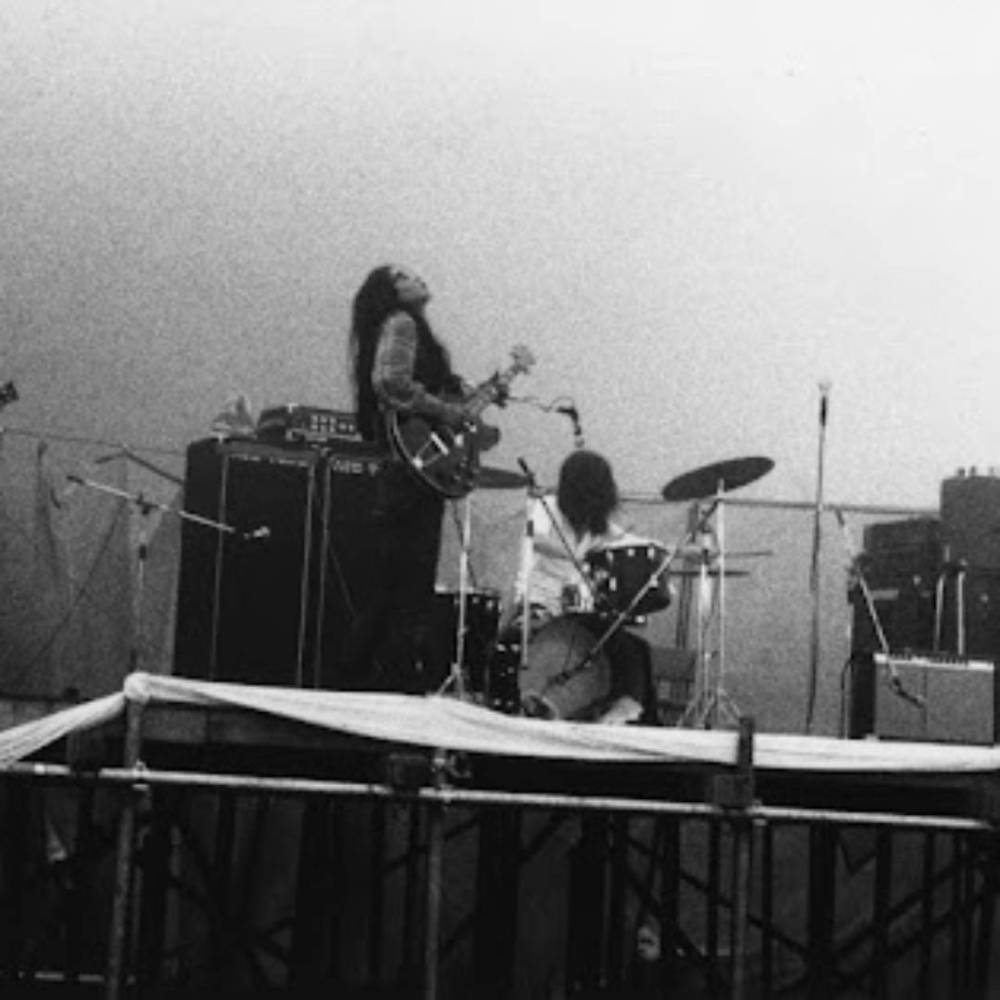All images via The Last One Musique
Remember when Douglas Martin said DMDS would be a monthly column? Yeah, neither do we.
Les Rallizes Dénudés made the kind of music I thought only existed in my sleep.
The Japanese rock ‘n rollers peddled in blistering noise-rock long before the term “blistering noise” became a cliché. One of the reasons why Dirty Beaches’ “A Hundred Highways” was so good was because Alex Zhang Hungtai chose to deploy his golden Elvis croon over “The Night, Assassin’s Night.” Wooden Shjips would’ve never enjoyed playing unfurling solos over trance-like repetition on songs rolling well past the ten-minute mark. John Dwyer might have stayed in Coachwhips. Et cetera, et cetera.
No convoluted subgenre titles, no frills. Just good ol’ fashioned rock ‘n roll (with distinct avant garde signifiers).
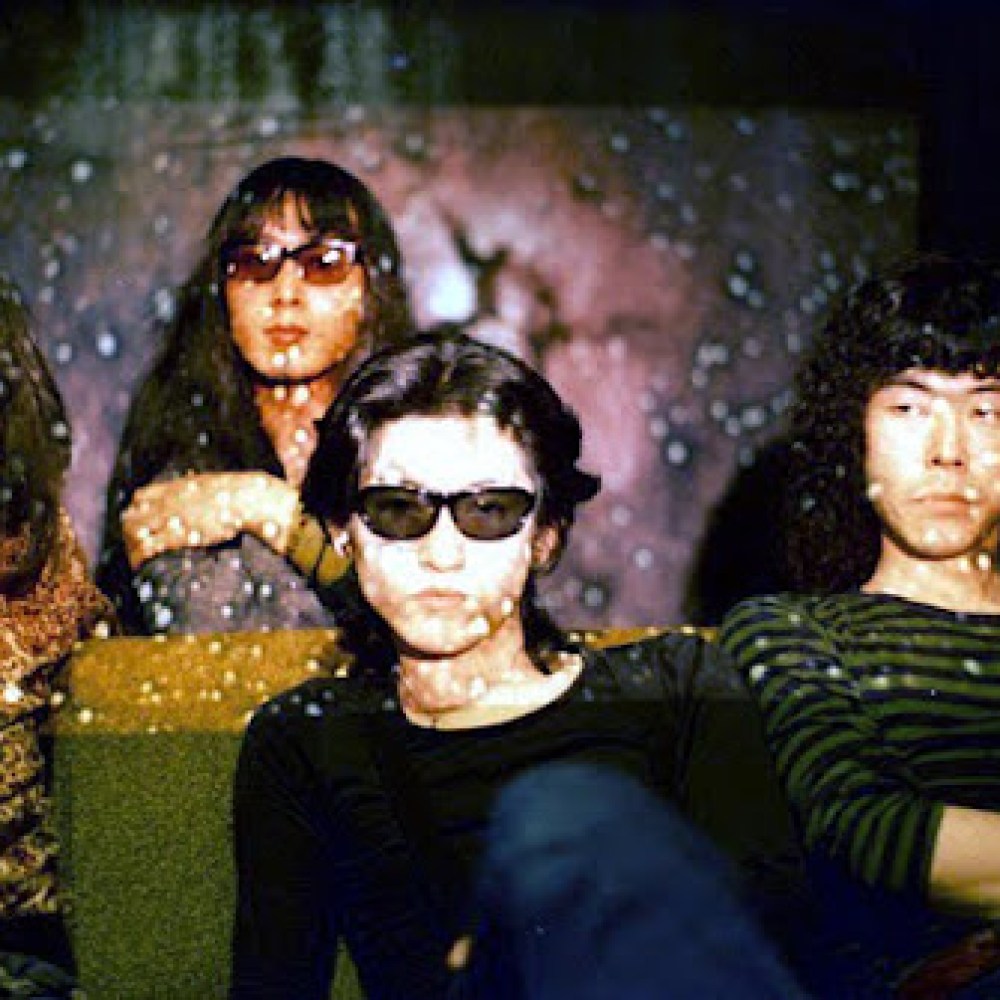
I understand that a journalist’s top priority should be to uncover the facts about their subject; to provide context for the artists who make the music we love. And I’m certain that at least some of the fun for the scores of intrepid writers who have waxed poetic or otherwise about the rock ‘n roll myth of Les Rallizes Dénudés is to dig deep enough to let some light shine through on the (intentionally) buried history of Takashi Mizutani and his rotating band of soothsayers and revolutionaries. Admittedly, I have an aversion to knowing what my favorite artists’ favorite movies are or what jam they like on their toast, so lack of personal detail doesn’t have much bearing for me as a critic.
Additionally, for me, the mystery and misdirection are fundamental aspects of why this music works so well. I have no desire—nor intention in this column—to separate the real shit from the bullshit. But because (in all cases but especially this one) the music is inseparable from the story, both what is known and what is speculated must be told. It is best to start at the end this time.
Much like another of music’s great obfuscators, Daniel Dumile, the announcement of Mizutani’s death came some time after he passed away. But the genius behind Les Rallizes Dénudés caught DOOM with a royal flush; instead of new of his passing being announced in a matter of weeks, Mizutani shuffled off this mortal coil a full two years before the music world picked up on the news.
For a musical talent frequently regarded as “enigmatic,” “reclusive,” and many other words which suggest an artist being private is a bad thing, the wildly belated announcement is appropriate. This information wasn’t delivered at the end of a bright musical life, however. It marked a new chapter, as an organization called The Last One Musique denounced LRD bootlegs—of which there are seven or eight dozen—and only officially recognized the small run of CD issues; three particularly exalted live performances captured in full.
It was quite the disappointing kick in the dick of people who believed the rumors that Mizutani was self-releasing and profiting off of his own bootlegs.
I don’t even know how possible it is to write about the history of Les Rallizes Dénudés—affectionately known to some as “the Rallizes” (pronounced “rallies,” like the kind raced in Subarus with no windows)—without scaling this feature into a full-length book proposal. Though for this column, of which the price of admission is usually the understanding that you’re going to be here for a while, a band whose stories once operated mostly on rumor and conjecture has accumulated a wealth of concrete information since the late 2021 statement of its frontman’s death.
Additionally, the mythology of LRD was thoroughly unpacked nearly a decade ago by veteran music journalist Grayson Haver Currin for Red Bull Music Academy in his unsuccessful attempts to find someone, anyone, involved in its creation. The quote this chapter is titled after is attributed to guitarist Maki Miura, from when she declined an interview with the New York Times about the Rallizes and Mizutani.
Here are the broad strokes: Mizutani formed the band in 1967 at Kyoto’s prestigious Doshisha University. He was obsessed with avant garde, pretty-extreme-for-its-time American music, from the Velvet Underground and the Stooges to Coltrane, Coleman, and Albert Ayler. (He also had a particular fondness for the sprawling jams of the Grateful Dead and other stalwarts of the Haight-Ashbury scene like Jefferson Airplane.) Mizutani was joined by a revolving door of like-minded musicians, who left to form their own bands or to graduate college—or to get busted for growing cannabis in a country notorious for its strict laws against weed possession; or to live in exile after hijacking a plane.
A brief aside, the first of many I’m sure: LRD bassist Moriyaki Wakabayashi went from a radical student background to being one of the members of the Japanese Red Army—some refer to the group as a Marxist collective, others a “hardline communist faction”—who brought pipe bombs and swords onto Japanese Airlines Flight 351 and tried to divert a plane to Cuba. The flight instead took route to North Korea, where Wakabayashi was granted asylum and, as far as we know, currently lives in exile.
It is said the notoriety of the hijacking is what led Mizutani to a private life.
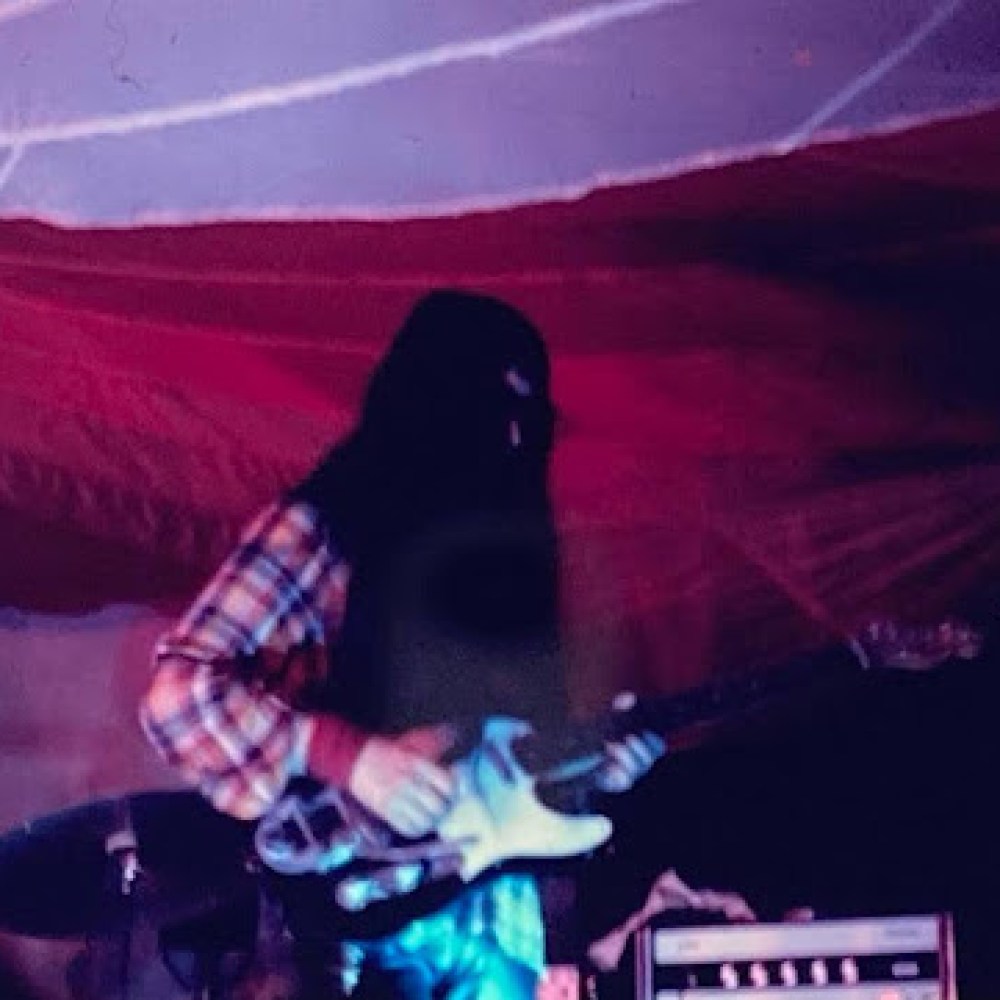
Makato Kubota, producer and former bassist for Les Rallizes Dénudés, has been the public voice for the campaign to bring the band’s music (officially) back in print. (Of particular note is his interview with Jennifer Lucy Allan of The Quietus, which came into the world just before the reissues began to roll out.) Before The Last One Musique was established with Kubota at the front—in turn disavowing all bootleg releases bearing the Les Rallizes Dénudés name except for the three iconic 1991 full-lengths released through Rivista—Kubota himself had a storied history in the Japanese rock ‘n roll scene. He produced one of the Rivista albums (Mizutani/Les Rallizes Dénudés) and played bass in the group for two stints between ‘69 and ‘73. The first ended when he went on a musical sojourn to the United States, the second when he was busted for growing and distributing weed gratis.
Kubota went on to form the great (and significantly poppier) Sunset Gang, which would later become Sunsetz, and then transition into production exclusively in the ‘90s. He reconnected with Mizutani sparingly in the three decades between the Rivista albums and Mizutani’s death; the last years found the legendarily hermetic frontman flirting with the idea of embarking on a final tour and remastering a number of their recordings.
Then, Mizutani passed on, thus symbolically passing on the torch to his friend Kubota, of whom it was up to to preserve the monumental legacy of the Rallizes. A suitcase full of cassettes found in Kyoto held the holy grail for a generation of arty rock ‘n roll fans.
Mizutani, the second in the famed Rivista trilogy, was the first collection of songs Kubota ever produced; on open reel tape recorded in an overnight session which went until about mid- to late-morning. Kubota noticed how brightly the sun shone that day. He played a handful of instruments and rounded out the production, and another member at the time provided percussion on whatever he could find (if I had to guess from the sound, the inventory consisted of buckets and cardboard boxes).
Mizutani is, by any standard of categorization, a singer/songwriter record. You could say I gave that away by listing the personnel and instruments involved, but there’s an intimacy the recordings are wrapped in; immediately apparent even if you weren’t just told that they literally tracked in an apartment in the dead of night. Kubota’s twinkling glockenspiel augments Mizutani’s mournful vocals on “Fissure” and alongside warm fingerpicking on “Morning Light, L’Aube.” The Mizutani version of “Memory is Far Away” is just as striking as any other iteration of the song (of which there are several) for its sheer use of quiet, a brushstroke it’s pretty safe to say LRD isn’t best known for.
Here’s a bit of spoiling the narrative of this critical essay for you: The versions of “The Last One” that appear in recorded form variously throughout are generally the aesthetic and emotional centerpieces of these full-lengths, as well as their greatest feats of endurance. “The Last One (1970)” can be inventoried at two chords and well over 22 minutes; its acoustic bedrock and near-impenetrable wall of grinding noise gives it a “European Son”-esque flavor—which you’ll either savor or choke on depending on how well you deal with acquired tastes.
The introduction of bass at around the 15-minute mark feels like the first burst of thunder after seeing lightning tickle the sky for hours.
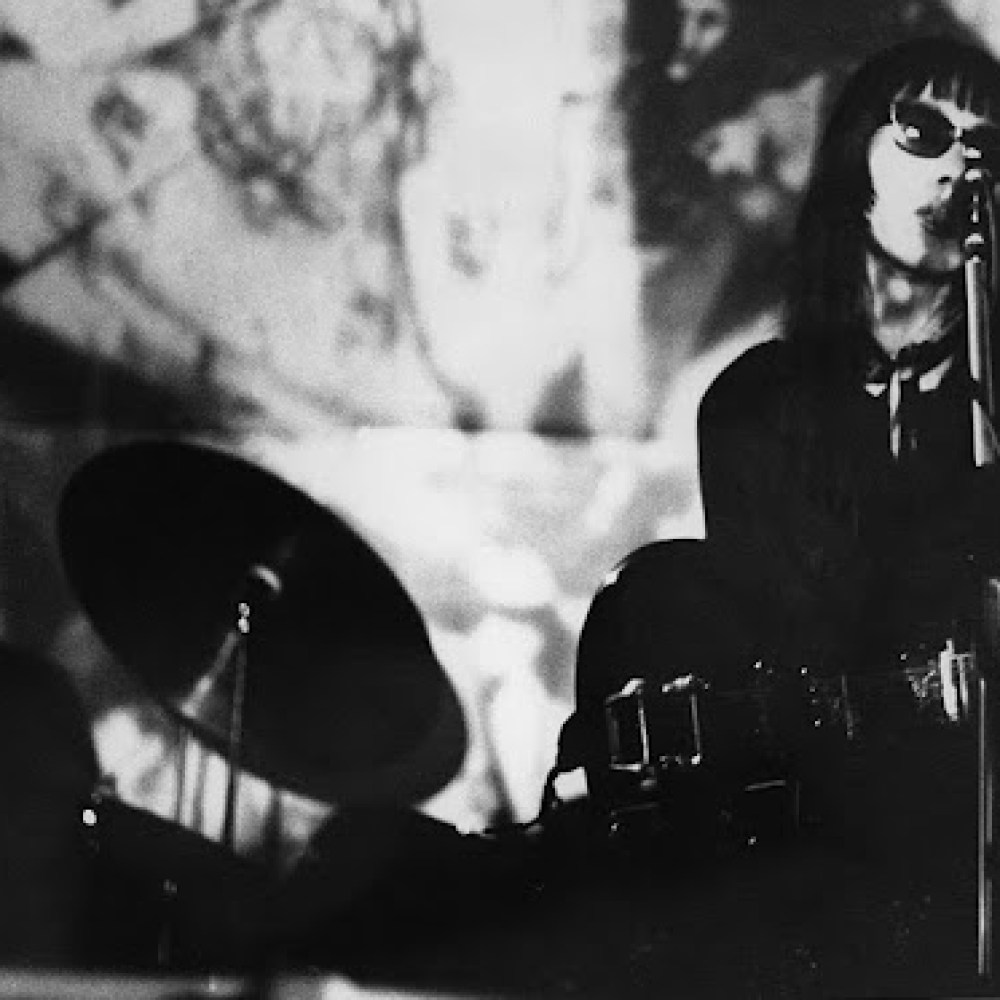
‘67-’69 STUDIO et LIVE, going back to the Velvet Underground reference, has the feel of the Velvets’ fire-breathing live performances at the Delmonico Hotel or their legendary/infamous Exploding Plastic Inevitable gigs. Which is to say these LRD recordings have the feel of an exorcism or a cathartic extinguishment of psychosis. Opener “Smokin’ Cigarette Blues (Live Version)” isn’t so much a song (or even a “jam”) as it is a firefight; very rarely have instruments been so successfully used as weapons.
Unlike future recordings, ‘67-’69 isn’t an all-out siege, and as a standalone full-length, might be the most musically diverse of the Rivista albums (as well as the ones that arrived during the 2020s on the great Temporal Drift). The collection has a few sprightly acoustic numbers, like a shuffling version of “Memory is Far Away” and a foreshadowing of the yet-to-be-released Mizutani in “Les Bulles de Savon/Soap Bubbles.” A fair share of the great late-1960s-style garage-psych numbers are given spotlight (both versions of “My Conviction”), and “Smokin’ Cigarette Blues” isn’t the only gripping noise experiment on the set; the “CD version” of the album ends with the blaring “Tobacco Road,” sounding like house band at the one blues juke joint in your designated area of eternal damnation.
In the five-disc Rivista Archives box set, the alternative title for ‘77 LIVE is “Most Violence Version,” which is so startlingly accurate it might even skirt understatement. It’s a baptism by fire for anyone looking to graduate from an intermediate understanding of rock ‘n roll; a literal obliteration between the bullshit line between so-called “high art” (drones and scalding levels of noise) and “low art” (12-bar blues; intentionally repetitive song structures). False binaries make the world go ‘round and the greatest artists are among the people who challenge them the loudest.
If you’ve only heard the fifteen or sixteen seconds of “The Night, Assassin’s Night” sampled on the aforementioned “A Hundred Highways”—arguably the highlight of Dirty Beaches’ 2011 stunner Badlands—you caught what was easily the most accessible bits of the remaining near-twelve minutes. The LRD original locks into a groove straight from 1959 (a groove which has been exhaustively reported was lifted from Peggy March’s top-charting 1963 version of “I Will Follow Him,” but mileage may vary on that being the true source material) and incinerates it with blown-out bass and reverbed, extremely distorted guitars, running it way, way past a logical point of conclusion. Mizutani puts on his best croon for good measure, singing like he’s rocking a pompadour along with his trademark black leather jacket and black shades.
“The Night, Assassin’s Night” leads straight into the brutally assaultive “Flame of Ice,” driven by the most hypnotic rhythm section groove of all the Rallizes’ lineups. It’s hard not to stick with the fire metaphors when echo cascades off severe distortion (on both the guitars and Mizutani’s voice) like smoke from a flame. ‘77 LIVE uses the extreme volume to lurch (“Deeper than the Night”) and surf through a tsunami of overdriven amps (“Reapers of the Night”), but still delivers Mizutani’s penchant for beauty on its version of “Memory is Far Away.”
It’s safe to say “The Last One (1977)” is the definitive version of Les Rallizes Dénudés’ signature song, with its menacing bassline (which became a hallmark of future versions for the remainder of the band’s lifespan) guiding along the screeching, bleating, thunderous drones and pummeling drums. With its two-bar motif prowling along for close to 20 minutes, what might be LRD’s definitive recorded document is sent off in judiciously homicidal fashion.
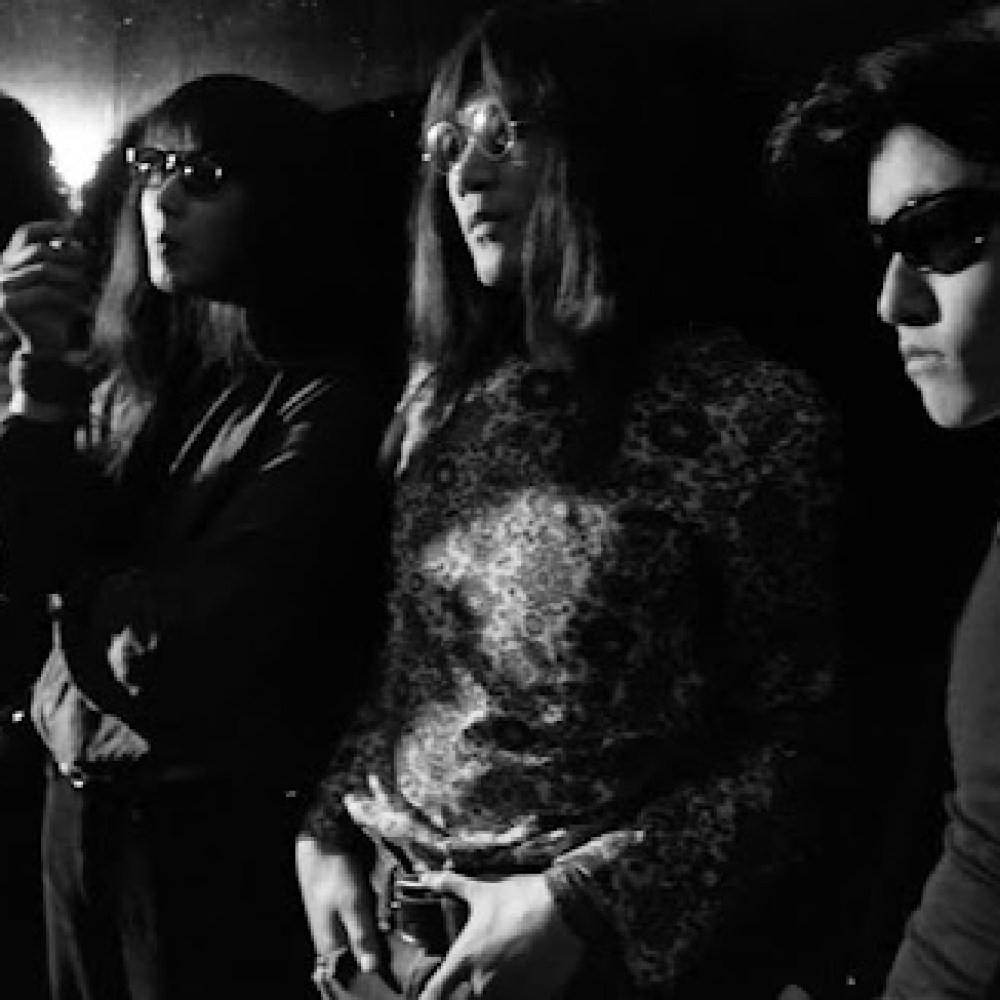
As an avowed fan of the Grateful Dead, the mythology of Fillmore West had to have captured Mizutani’s imagination. OZ was most certainly Tokyo’s equivalent to the famed San Francisco space. Like many incubators for live experimental music, OZ was short-lived, lasting only 18 months, but the bands that filled the space with noise are among the most influential in Japanese music history. Les Rallizes, Acid Seven, Taj Mahal Travelers, and many others. Kubota told The Guardian in 2022, “We were the first generation of school dropouts and hippies, and OZ was the first place for us to play.”
Among the acts featured on the original OZ Days Live comp—as suggested, recorded in the days before OZ closed and the block was razed for development—was an empty venue performance by LRD. For The OZ Tapes, the four Rallizes songs released on OZ Days Live were compiled with four other tracks that had reportedly been sitting in mothballs for nearly a half-century.
It’s easy to deem The OZ Tapes as the Rallizes’ most essential release—if you’re unlike me and find a lot to be loved in the scuzzy, distorted, overdriven pallor of ‘77 LIVE, which also has the distinction of being the best full-length of the famed LRD/Rivista trilogy. For starters, the sound quality is immaculate, which I’m certain matters to others more than it matters to me. The OZ Tapes has a great version of “Vertigo otherwise My Conviction” and arguably the definitive version of “Memory is Far Away.” Given the time of its recording—the acid-drenched early seventies, where the bloom was off the “flower power” stem and there was more than enough psychosis to fuel the global psych scene—the LRD transmissions from OZ feel very much from an era before the financial and social decay of the ‘70s fully took root (the postscript of which is very musically evident on ‘77 LIVE), its music showing sharp teeth, but also a hint of optimism.
Mizutani’s half-screaming vocals on “Wilderness of False Flowers” sound anguished for certain, but from a person who knows something better is on the horizon they are moving headlong towards.
The OZ Tapes hosts two versions of “The Last One (1970)” in case you needed one more nudge to include one of them in your LRD canon. Both exist as slow-burning psych-rock stunners living in slightly altered spiritual timelines. The original version is heavier and takes its time (about 3 ½ minutes) to wipe the sleep from its eyes and get in a good stretch, while Version 2 would be softer to the touch if not for the occasional peppering of ear-piercing feedback. On the former, Kubota’s bass playing is virtuosic and some of the most purely musical work in the band’s archives. The latter has a Mizutani guitar solo that lasts for the better part of 15 minutes.
Although it was moved to a new location shortly after the turn of the century, Club Citta has been a staple venue in Kawasaki for over 35 years. The 1300-capacity indoor venue is the largest (and to some, the most reputable) in Japan’s eighth most populated city.
The title of this final chapter comes from the liner notes of CITTA ‘93, written by Shinya Matsuyama. Shinya retold the events on the night of February 17, 1993, in a little club in Kawasaki. Long story short, the band blew the doors off the club from the inside, quite literally.
On that day in February 1993—just four days removed from the band’s first gig in nearly five years—Les Rallizes Dénudés took the stage as a quartet. Joining Mizutani was Yokai Takahashi on bass, Kodo Noma on drums, and Katsuhiko Ishii on second guitar; the four players providing a hefty slab of hard psych that made good on Mizutani’s Blue Cheer fandom. “White Awakening (1993),” “Eternally Now,” and “Darkness Returns 2” filter ‘70s hard rock through the classic Mizutani filter, rendering the genre into ear-splitting, hypnotically repetitive set pieces drawn out stupendously.
As per usual, the 3xLP’s most striking number is its version of “The Last One” (of course, the year of its recording in parentheticals), presented here at an absolutely ludicrous forty minutes. It is certainly the most audacious LRD has been in recorded form (that we know of so far); a punishing jam with an equally punishing run time.
Recorded on then-revolutionary ADAT tape with its master recordings kept in immaculate condition for three decades, CITTA ‘93 has surely pleased the nerdy audiophiles in the LRD fan contingent, of which I’m sure there are scores. Undoubtedly, Kubota’s mix of this landmark two-hour performance would have pleased Mizuntani, who was, as mentioned earlier in this piece, famously irritated by the shitty recording quality of the dozens of bootleg Rallizes recordings. The hundreds and hundreds of hours Kubota spent laboring over the mixes that would become CITTA ‘93 was wholly a measure of respect for the immortal genius that belonged to his friend.
As a musical document, it stands among the very best work belonging to the group, because while the band teetered on the tightrope of improvisation, Mizutani and his accompanying musicians were always game for the task—but CITTA ‘93 sounds particularly inspired.
The space the band gives themselves to alter their (at this point) famed compositions—as they were wont to do at a moment’s notice—benefitted the Club Citta performance exponentially. The bedrock of “The Night, Assassin’s Night,” with its famous bassline and propulsive drumming by Noma, is torn apart by a monstrous guitar solo, but in a much different way from their definitive LIVE ‘77 version; bending drones and roaring notes trade off with the near growl of Mizutani’s verses for nearly half of the song’s ten minutes. Signature ballad “Memory is Far Away” features a wail to g-d; a bloodletting, a catharsis, an exorcism of all the pain that can’t be sung or expressed with lyrics.
Many intrepid music critics have noted that the most remarkable aspect of CITTA ‘93 is its sterling audio quality and how it highlights the textural brilliance, emotional range, and virtuosic dynamics of Les Rallizes Dénudés. But every album, whether recorded live to tape or endlessly tinkered with in studios of various financial expense, is a document of a moment in time. CITTA ‘93 is legendary not because of its recording quality (though Kubota’s tireless efforts should be exalted), but because it is a late-career triumph of a genius toiling away at his craft. It is evidence that you can draw the same landscape in many different ways and present them as a tapestry. The album is a rebuke of the idea that artists must think of their audience first; some audience members thought the Rallizes were so oppressively loud that they ran into the lobby—or down the street—to seek shelter.
CITTA ‘93 is a pledge all artists should make to themselves; to seek out your own satisfaction primarily; to challenge first and then inspire. Because the people who fight through will eventually reach the other side, arriving at a place of understanding in the embrace of your art and intentions.
Takashi Mizutani and all of the associated players who have ever served in Les Rallizes Dénudés were proof positive that new things can be wrung out of the decaying horse that rock ‘n roll music became, that all of the paths which were paved from its foundation can be jettisoned in favor of loud guitars and repetitive song structures going for so long they folded into themselves.

